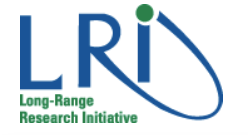- Basf Se - Germany,
- Fraunhofer Institute for Ceramic Technologies and Systems (Fraunhofer IKTS) - Germany
The LRI C10 project aims to develop better tools for the identification of the inhalation toxicity of microplastics of different origin/with different properties. Humans are ubiquitously exposed to microplastics; this includes a diverse class of compounds/particles but also very different routes of exposure i.e. drinking water, food, and air pollution. The concentration of nano- and microplastic particles (NMPs) in the environment is increasing in parallel to global plastic production and increasing use of plastic materials. NMPs are detectable in numerous aquatic organisms and also in human biomonitoring samples. Thus, there is agreement on the issue that humans ingest and inhale microplastics which pose a possible risk for human health. However, so far, human risk assessment is lacking a standardized approach due to the following reasons: Limited availability of appropriate reference materials Analytical challenges in the detection and dose definition Missing information about relevant phys-chem properties of test materials Missing of standardized testing conditions (particle sizes, time lines, appropriate cell systems for in-vitro testing and application, dose response, relevant endpoints and time lines for in vivo studies) In general, comprehensive experimental data of particle properties and particle-bio interactions are needed to perform a high-quality risk management in the case of adverse health effects on human. Data on the fate of particles in the body upon inhalation, dosimetry and dose-metrics as well as biodissolution are decisive factors to achieve an improved risk assessment. The state of the art characterization of micro- and nanoplastics separately and after cellular uptake with respect to the application of correlative measurement techniques is yet limited because of the difficulty to find the same particles and cells in different instruments. In this project existing and new algorithms will be further developed and integrated in microscopy and spectroscopy workflows for automatic relocalization, detection, and measurement of identical objects.
Want to analyze based on this project via our analysis tool? Analyze this project
Knowledge Gaps
Environmental fate and behavior of plastic
Fate and behavior within an organism
Human toxicity
Environmental effects and ecotoxicity
Dose-response relationship




